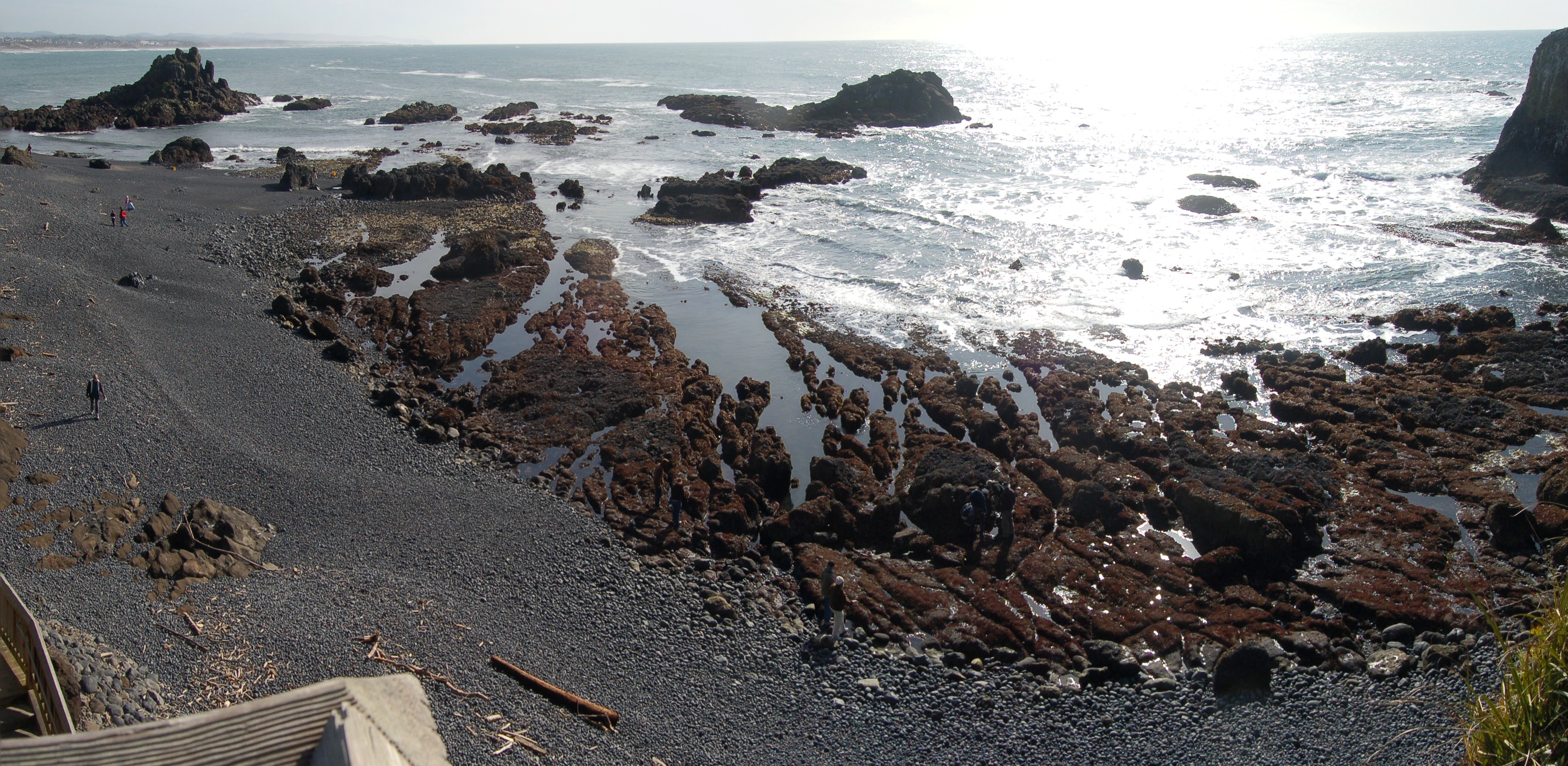Yaquina Head, and another of the coastal occurrences of Columbia River Basalt,
Cape Lookout, give the appearance of channelized flows- that is, the basalt flows in these two locations don't appear to have spread out on a wide coastal flat, but seem to have been confined to a relatively narrow channel. As a result, both consist of a resistant "finger" of rock sticking out into the ocean. I don't know whether Cape Lookout has a lighthouse, but many of these rocky headlands, including Yaquina Head, do.
In addition to creating navigational hazards to marine travelers, fingers like these two are obstacles to whales that migrate from south to north then back again each year. They tend to travel where the water is a particular depth, and will swim up to protrusions like this, then turn out to sea to get around them. As a result, spots like this are among the closest they get to land- to the delight of sightseers. On this day, there was a good crowd on the west side of the lighthouse whale watching. I personally didn't see any spouts (nor did I spend much time looking; too eager to go look at rocks), but they assured me there were two or three whales passing through at the time.
Photo unmodified. March 7, 2012.
FlashEarth location.














































